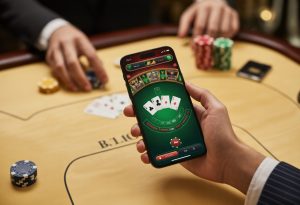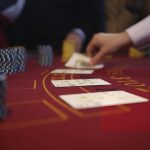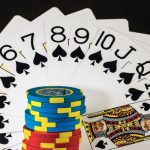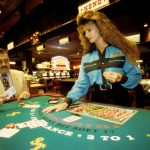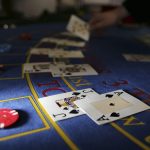Many players struggle with the unique rules of European blackjack when they first sit at a casino table. European blackjack rules differ from American versions mainly because dealers don’t check for blackjack until after all player decisions.
This guide will walk you through everything from basic gameplay to advanced strategies that can help lower the house edge. Learn how to make smarter decisions and boost your chances of winning.
European Blackjack Rules
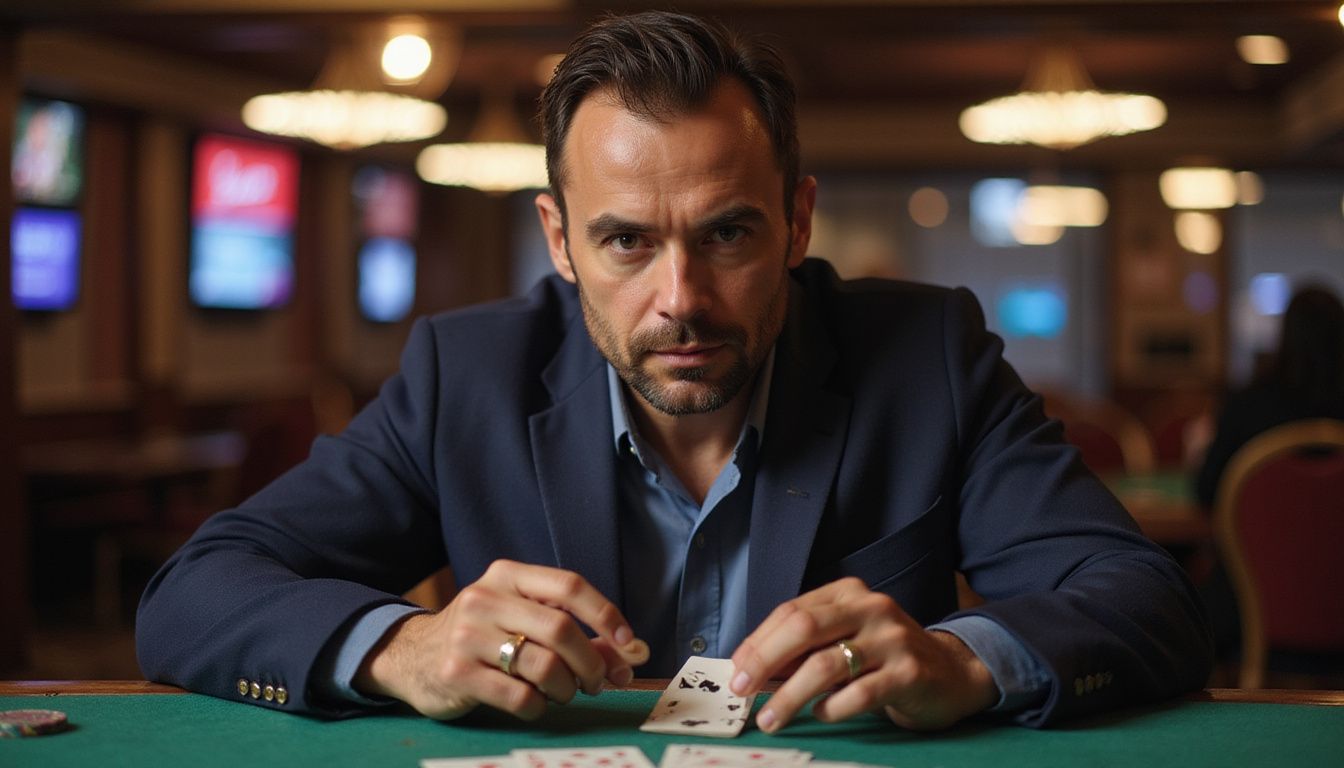
European Blackjack follows specific rules that set it apart from other versions of the popular card game. These rules create a unique playing experience with different strategic considerations for players at the table.
Number of decks and card shuffling
European Blackjack typically uses six decks of cards, all shuffled together before play begins. Most casinos employ automatic shuffling machines to ensure complete randomness and prevent card counting.
The dealer places a cut card near the bottom of the shoe, which signals when it’s time to reshuffle all cards. This multi-deck system increases the house edge slightly compared to single-deck games.
The essence of European Blackjack lies in its simplicity – six decks, one shuffle, and pure strategy.
The shuffling process creates an important strategic element for players using basic strategy. Unlike American versions, European Blackjack dealers don’t check for blackjack until after players complete their actions, making proper understanding of deck composition crucial.
Next, we’ll explore the significant “no hole card” rule that defines European Blackjack.
No hole card for the dealer
Unlike American versions where dealers check for blackjack right away, European Blackjack has a major difference in how cards are dealt. In European Blackjack, the dealer does not receive a second card (the hole card) until after all players complete their actions.
This “no hole card” rule creates a unique risk for players. If you double down or split pairs and then the dealer gets a natural blackjack, you lose all additional bets placed. This rule increases the house edge by about 0.11%, making the game slightly less favorable compared to American Blackjack tables.
The absence of a hole card forces players to adjust their basic strategy. I’ve lost extra chips many times by doubling down against a dealer’s 10 or Ace, only to watch them flip a blackjack on their next card.
Smart players must be more cautious about doubling and splitting when facing potential dealer blackjacks. The European no hole card rule dates back to the game’s origins and remains a defining feature in casinos across Europe and many online blackjack sites today.
Doubling down restrictions
European Blackjack limits your doubling options compared to American versions. Players can only double down on hard totals of 9, 10, or 11 in most European games. This rule makes a big impact on your strategy and slightly increases the house edge.
American Blackjack often allows doubling on any two cards, giving players more chances to maximize winning hands. The doubling restriction means you must be more selective about when to double your bet at European tables.
These limitations affect your basic strategy decisions. You’ll need to adjust your play since you can’t double soft hands (those containing an Ace counted as 11) or hard totals below 9.
Many casino experts point out that these restrictions make European Blackjack less flexible for players looking to capitalize on strong starting hands. Learning these specific doubling rules helps you avoid mistakes that could cost you money at the table.
Splitting rules
Unlike doubling down limits, splitting rules in European Blackjack offer players specific options for paired cards. Most European Blackjack games allow you to split pairs once, creating two separate hands from your initial pair.
You can split any 10-value cards (10s, Jacks, Queens, Kings) only if they’re identical cards. I’ve found that splitting Aces is almost always permitted, but you’ll typically receive just one card per split Ace.
This differs from American blackjack where you might split up to three or four times in some variations.
The house edge increases if you make poor splitting decisions. Never split 10s or 5s in European Blackjack – these hands are already strong or better played as single hands. Pairs of 8s and Aces should almost always be split according to basic strategy charts.
The no-hole card rule makes splitting decisions more critical in European games since the dealer doesn’t check for blackjack until after all player actions finish. This creates a situation where you might split pairs and double your bet only to lose both hands if the dealer reveals a natural 21.
Key Differences Between European and American Blackjack
European Blackjack differs from American Blackjack mainly in how dealers handle their cards and when players can double or split – these rule changes directly impact your strategy and winning chances at the table.
Learn these critical distinctions to boost your edge against the house.
Dealer card rules
Dealer card rules form the backbone of European Blackjack and create its distinct character. In European Blackjack, dealers don’t check for blackjack until after all players complete their actions.
This “no-hole card” rule means the dealer receives only one face-up card initially, with the second card drawn after players finish their turns. This rule increases the house edge because players might double down or split pairs only to lose both their original bet and extra wagers if the dealer later reveals a blackjack.
I’ve lost many promising hands this way during my trips to European casinos. The dealer must stand on all 17s (including soft 17s) in most European Blackjack games, which differs from some American versions where dealers hit on soft 17.
This standing rule slightly favors players by reducing the dealer’s chances of improving their hand total.
Doubling and splitting variations
European Blackjack limits doubling down to hard totals of 9, 10, or 11 only. This rule differs from American games where players can double on any two cards. Split rules also vary in European tables – players can split pairs once but cannot re-split if they receive another matching card.
Aces split in European Blackjack come with strict limits too. You’ll receive just one card per split Ace, and split Aces that catch a 10-value card don’t count as blackjack. I’ve played at casinos in Monte Carlo where these rules created a house edge around 0.39%, slightly higher than some American versions.
The no-hole card rule makes doubling and splitting more risky since the dealer might have blackjack, taking all your additional bets without giving you a chance to see their hand first.
Basic Strategy for European Blackjack
Learning basic European blackjack strategy cuts the house edge to less than 0.5% when you master proper play decisions for each hand. Discover how to make the right moves with our clear strategy charts and simple rules that guide you through every possible scenario at the table.
Simplified strategy rules
Basic strategy rules for European Blackjack help players make smart choices at the table. I’ve spent years perfecting these moves to reduce the house edge and improve my winning chances.
- Always stand when you have a hard 17 or higher total against any dealer upcard.
- Hit on hard 8 or lower regardless of what the dealer shows.
- Double down on hard 9 when the dealer shows 3 through 6.
- Double down on hard 10 or 11 when your total exceeds the dealer’s upcard.
- Always split Aces and 8s no matter what card the dealer shows.
- Never split 10s, 5s, or 4s as these hands are stronger together than apart.
- Hit soft 17 or lower against a dealer’s 9, 10, or Ace.
- Stand on soft 19 or higher against any dealer card.
- Avoid taking insurance bets as they carry a high house advantage.
- Split 2s and 3s only when the dealer shows 4 through 7.
- Hit hard 12 against a dealer’s 2 or 3, and stand against 4 through 6.
- Always hit hard 16 against a dealer’s 7 through Ace.
- Never take even money on a blackjack as this reduces your long-term profits.
- Stand on hard 13 through 16 when the dealer shows a 6 or lower.
Using strategy charts effectively
Strategy charts serve as your roadmap at the European blackjack table. I printed my first chart on a small card that fit in my wallet, making quick decisions during gameplay much easier.
These charts show the right move for every possible hand against each dealer upcard. You need to study the chart sections for hard totals, soft totals, and pair splits separately. Most charts use color codes – green for hit, red for stand, blue for double down, and yellow for split.
The no-hole card rule in European blackjack changes some key decisions compared to American versions. For best results, practice with the chart before risking real money. Many online casinos offer free games where you can test your chart knowledge without pressure.
Your chart should match the specific European blackjack rules at your casino. Different doubling restrictions and splitting rules affect optimal strategy. I learned this lesson after losing several hands using an American strategy at a European table.
The house edge in European blackjack sits around 0.39% with perfect basic strategy play. This edge increases to over 1% with poor decisions. Free mobile apps now let you practice with the correct chart while on the go.
The strategy becomes automatic after about 20 hours of focused practice, leading to faster and more confident play at the tables.
Advanced Tips for Mastering European Blackjack
Our advanced tips section shows you secret methods to boost your European Blackjack performance through smart money management, skipping bad bets, and getting plenty of practice – read on to master these expert techniques!
Managing your bankroll effectively
Smart money management forms the backbone of successful European blackjack play. I set strict limits before I sit at any blackjack table – typically 5% of my total bankroll per session and 1% per hand.
This approach protects me from the inevitable losing streaks that happen in this casino game. Players who ignore bankroll rules often bust their accounts during normal variance swings.
Your betting units should stay consistent regardless of previous hand outcomes. The basic strategy for European blackjack includes proper money management to combat the house edge of approximately 0.39%.
Many card counters fail not from poor counting skills but from poor bankroll discipline.
Tracking your wins and losses helps identify patterns in your play. I record each session in a simple app that shows my profit trends over time. This practice reveals which table games drain my funds and which boost my profits.
European blackjack offers better odds than many casino games like roulette or slots, but only if you stick to your limits. Split hands and double down options tempt players to bet more than planned.
The no-hole card rule in European blackjack makes disciplined betting even more crucial since you might lose extra money on doubles and splits when dealers make blackjack.
Avoiding the insurance bet
The insurance bet in European Blackjack looks tempting but costs you money in the long run. Most casino experts agree this side wager carries a massive house edge of around 7%, making it one of the worst bets at the blackjack table.
Even money offers (a type of insurance bet) might seem like a safe option when you have blackjack and the dealer shows an ace, but math proves otherwise. Your blackjack already pays 3:2, and taking insurance reduces your expected value over time.
Smart players skip insurance completely and stick to basic strategy decisions that keep the house edge low. The European no-hole-card rule makes insurance even less favorable than in American versions.
Many advantage players and professionals like Ed Thorp have demonstrated through card counting that insurance only becomes profitable in very specific deck compositions. For casual players without counting skills, the simple rule remains: never take insurance if you want to maximize your chances against the dealer.
Practicing with free games
Free games offer a risk-free way to master European Blackjack after learning to avoid insurance bets. Many online casinos provide practice versions that use the same rules as real-money games.
These free options let you test basic strategy without losing cash. You can practice doubling down on hard totals and managing split hands without stress. Free games also help you understand the no-hole card rule that makes European Blackjack unique.
Playing free European Blackjack builds muscle memory for making quick decisions at the table. Start with 30 minutes of practice daily to see improvement in your game. Focus on situations where European rules differ from American blackjack, such as dealer blackjack scenarios.
Track your results to spot weaknesses in your approach. Most players need about 50-100 practice hands before they feel ready for real casino action. This preparation helps reduce costly mistakes when actual money sits on the line.
Conclusion
European Blackjack offers a unique challenge with its no-hole card rule and special doubling restrictions. Players who master the basic strategy chart gain a clear edge at the tables.
Your success depends on smart bankroll management and knowing when to avoid traps like the insurance bet. Practice makes perfect, so try free online games before risking real money.
Armed with these strategies and rules, you’ll step up to any European Blackjack table with confidence and skill.
FAQs
1. What is European blackjack and how does it differ from American blackjack?
European blackjack uses six decks of cards and the dealer doesn’t get a hole card until after players act. Unlike American blackjack, the European version has no peek for blackjack when an ace shows, which slightly increases the house edge.
2. What basic strategy should I use for European blackjack?
Focus on learning proper plays for hard totals and soft totals based on the dealer’s up card. The basic strategy for European blackjack differs from other variations because of the no-hole-card rule, which affects decisions on doubling down and splitting hands.
3. Can I double down on any cards in European blackjack?
No. In European blackjack rules, you can only double down on hard totals of 9, 10, or 11, which is more restrictive than other blackjack variations like Spanish 21 or blackjack switch.
4. Is card counting effective in European blackjack?
Card counting works in European blackjack but with lower effectiveness than in games with fewer decks. The six-deck shoe makes tracking cards count more challenging, though dedicated bettors can still gain a small edge with proper technique.
5. Does European blackjack offer surrender options?
Most European blackjack tables don’t offer early surrender or late surrender options. This differs from some American blackjack variations where surrender can help reduce the house edge in certain situations.
6. What are the odds in European blackjack compared to other casino table games?
European blackjack offers better odds than most casino games like baccarat or infinite blackjack, with a house edge around 0.39% when using perfect basic strategy. However, it has slightly worse odds than traditional American blackjack due to the no-hole-card rule and restricted doubling options.





